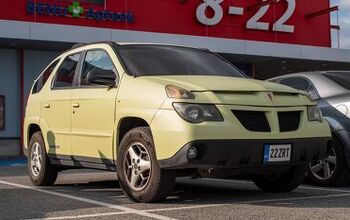Piston Slap: An Inappropriate Grab?

Hi Sajeev,
We have a 2000 Dodge Durango 2WD with rear abs (hub assembly is different than if the front had abs if it matters) and 165k miles. It has been a pretty good truck with few issues but we do have an annoying one that came up. The truck isn’t a commuter for me, just for the occasional errand that my wife needs to run or when the whole family goes somewhere so it gets driven a couple times a week just a few miles on the highway into town and back. The issue is the brakes.
They work fine but when stopping at highway speeds with constant pressure on the pedal the brakes will suddenly grab more and sometimes it is one side that will grab slightly quicker than the other then the braking is equal again. These pads have about 8k mile on them and are a ceramic composite pad and were bedded properly when installed but the rotors had some slight grooving and the old one had little life left. I went with this style because the last set of ceramic composite (NAPA brand) were great with good feel and exceptional performance when hustling on the back roads. The new ones are from a parts warehouse that supplies parts stores all over the area (dad works there so I got a great discount. During heavy braking the issue doesn’t show up but it is a little disconcerting to have the truck pull to one side briefly during normal stops. The brakes will exhibit some fade now when hustling the curvy roads where the old ones did not. Re-bed or replace pads and rotors? Rust from sitting a while after the last snow storm and salty roads?
Sajeev answers:
Getting old sucks. While I am not sure of the exact problem, I betcha it’s one of these:
- Collapsed brake line (inspect all rubber components)
- Rusty brake caliper bores (reman replacements are cheap)
- Crud in the brake caliper’s fluid reservoir (see above)
- Very, very bad brake fluid (flush the system entirely)
- Extremely loose ball joint on one side (not likely)
It sounds like you have the brake pad and rotor situation under control, and you drive it enough to make rust a non-starter. I mean non-stopper.
I think you have an old truck that needs more than a basic brake job. Time to check the calipers, the brake lines and the suspension. Hopefully all you need are a new pair of front calipers: they are about $25 each from Rock Auto. Score.
Send your queries to sajeev@thetruthaboutcars.com. Spare no details and ask for a speedy resolution if you’re in a hurry.

More by Sajeev Mehta
Latest Car Reviews
Read moreLatest Product Reviews
Read moreRecent Comments
- Jeff Self driving cars are not ready for prime time.
- Lichtronamo Watch as the non-us based automakers shift more production to Mexico in the future.
- 28-Cars-Later " Electrek recently dug around in Tesla’s online parts catalog and found that the windshield costs a whopping $1,900 to replace.To be fair, that’s around what a Mercedes S-Class or Rivian windshield costs, but the Tesla’s glass is unique because of its shape. It’s also worth noting that most insurance plans have glass replacement options that can make the repair a low- or zero-cost issue. "Now I understand why my insurance is so high despite no claims for years and about 7,500 annual miles between three cars.
- AMcA My theory is that that when the Big 3 gave away the store to the UAW in the last contract, there was a side deal in which the UAW promised to go after the non-organized transplant plants. Even the UAW understands that if the wage differential gets too high it's gonna kill the golden goose.
- MKizzy Why else does range matter? Because in the EV advocate's dream scenario of a post-ICE future, the average multi-car household will find itself with more EVs in their garages and driveways than places to plug them in or the capacity to charge then all at once without significant electrical upgrades. Unless each vehicle has enough range to allow for multiple days without plugging in, fighting over charging access in multi-EV households will be right up there with finances for causes of domestic strife.


































Comments
Join the conversation
Very few automakers recommend periodic change of brake fluid, possibly only the Germans, who tend to go with three years. I am amazed that even reputable shops change out pads and rotors but don't flush the fluid. Rusted calipers and wheel cylinders, crud blocking brake lines and hoses as well as the ABS unit and proportioning valves could mostly be prevented by getting the water that accumulates over time out of the system.
In addition to the other suggestions, bad suspension bushings or a rusted frame could be causing this, especially on a 13-year-old Dodge. I once had a car that behaved like this, and it turned out that the suspension was changing geometry under braking load. Basically, applying the brakes would make the wheel pivot towards the rear of the car, as the trailing arm twisted the rusty frame. If this is it, it's a very dangerous condition. A welding repair can fix it, if the rest of the vehicle is worth saving. More likely, you have a bad caliper or jammed caliper bracket, which should permit the caliper to float.